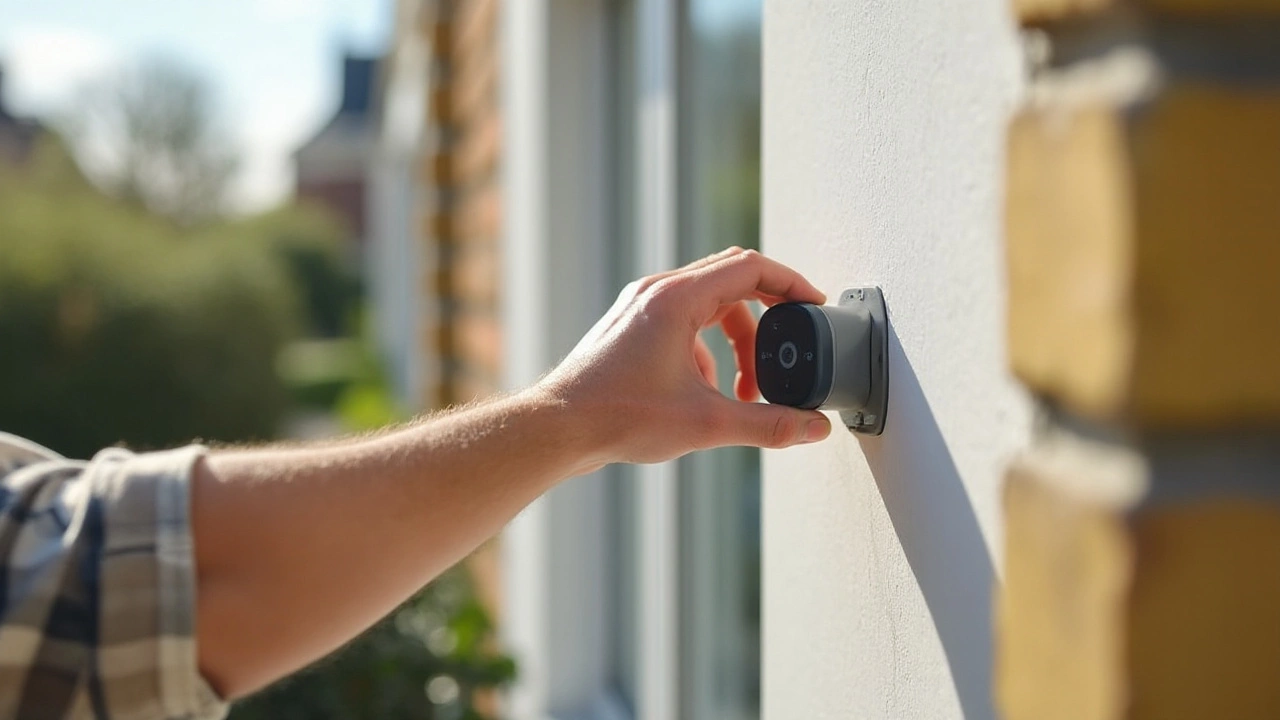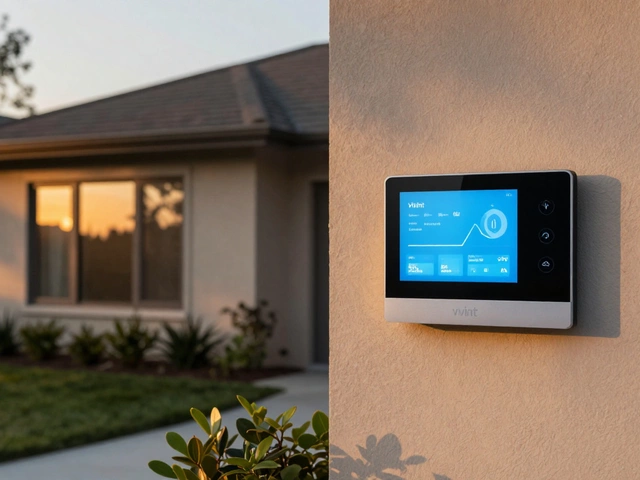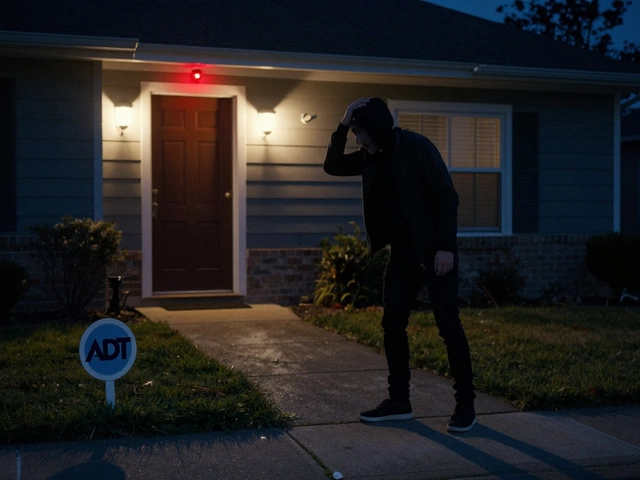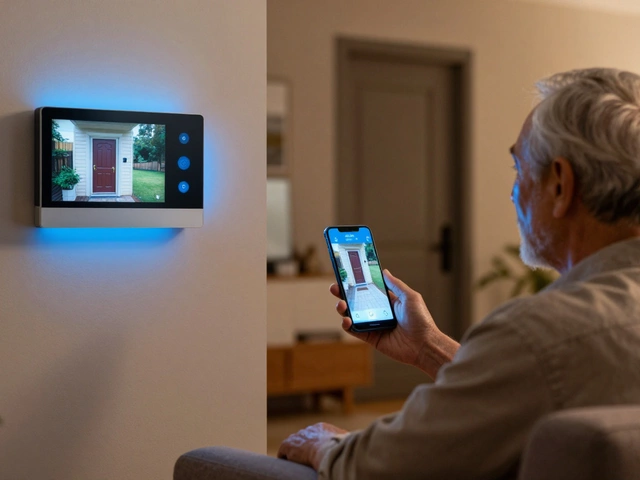In today's digital age, the concept of security has taken on a new dimension with the advent of wireless CCTV systems. People's desire for actionable and efficient security solutions has driven them away from traditional wired setups towards more versatile options.
Wireless CCTV kits utilize cutting-edge technology, transmitting video and audio signals without the hassle of cumbersome cables. It's an optimal choice for those who value ease of installation and flexibility in positioning cameras.
While these systems offer remarkable convenience, understanding their functionality, advantages, and limitations is essential. Whether you're safeguarding a home or a business, exploring the nuances of wireless CCTV can help you select the most suitable kit for your needs.
- Understanding Wireless CCTV Technology
- Benefits and Challenges of Wireless Systems
- Tips for Choosing the Right Wireless CCTV Kit
- Installation and Maintenance Insights
Understanding Wireless CCTV Technology
Wireless CCTV systems are the vanguard of modern security solutions, transforming how we think about surveillance. Unlike their wired counterparts, these systems use radio frequencies or internet signals to transmit the video feed from the cameras directly to the receiver or a storage device. One of the biggest advantages of wireless CCTV is its flexibility in installation, enabling the placement of cameras in locations that are hard to reach with traditional wiring. These systems often rely on Wi-Fi technology, making it easy to integrate them into existing network infrastructures while also allowing remote monitoring through smartphones, tablets, or computers.
A common misconception about wireless systems is that they are completely wire-free. While the video signal and control data indeed transmit wirelessly, the cameras themselves still typically require power, which can come from battery packs or a nearby power outlet. Interestingly, advancements in battery technology have led to the development of truly wire-free models. These are an excellent option for places where running a power cable is impractical. When setting up a security system around your home or office, it is crucial to consider factors like Wi-Fi signal strength and potential interference sources, which can affect the performance and reliability of these wireless systems.
It's fascinating to note that the advent of 5G technology is pushing boundaries even further. With its promise of lower latency and higher data transfer rates, 5G is poised to enhance the efficiency and clarity of home surveillance systems. This could lead to a surge of innovations, potentially overcoming some traditional challenges associated with older wireless systems. According to a well-regarded tech analyst,
"The integration of 5G is set to redefine wireless surveillance, offering unprecedented speed and clarity that will undoubtedly set new standards."This leap could result in quicker, more reliable access to footage, as well as enable better quality feeds in real-time. As with any technology, having a robust understanding of your environment and requirements will guide you in selecting the right equipment to ensure optimal performance.
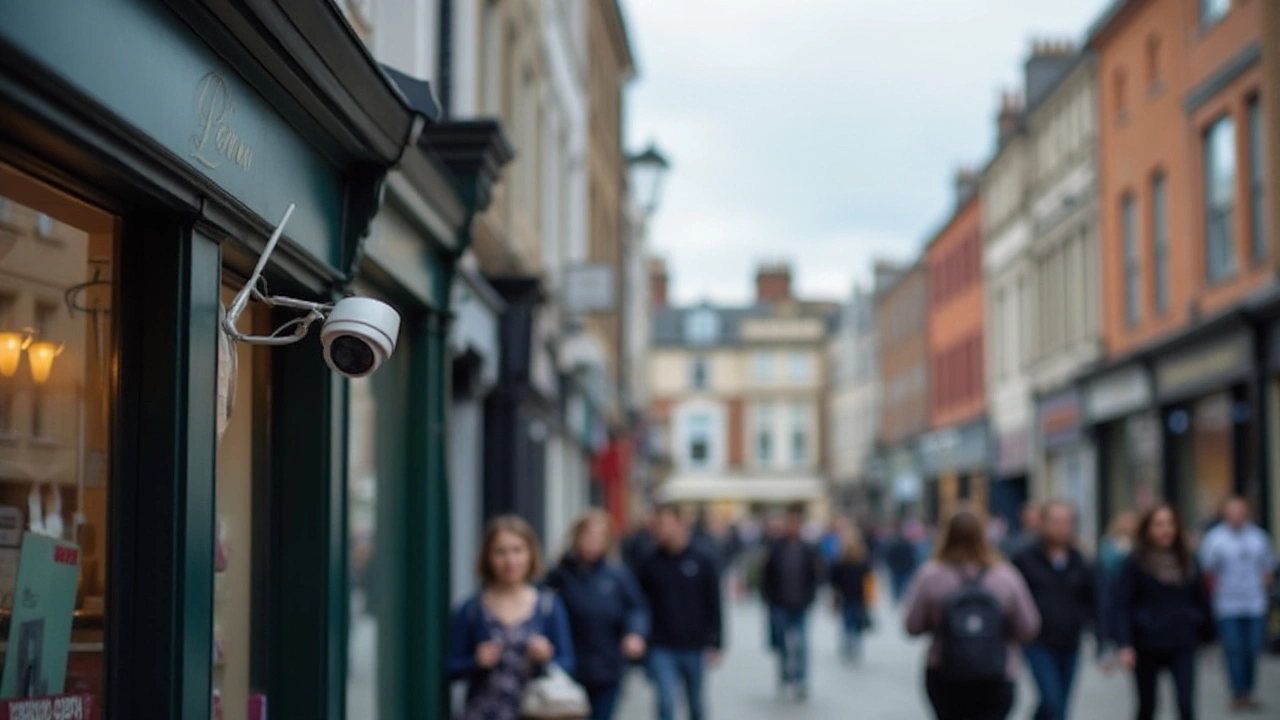
Benefits and Challenges of Wireless Systems
Wireless CCTV systems have revolutionized the way we think about security, especially in residential and commercial settings. One of the most striking benefits of these systems is their ease of installation. Unlike wired systems that require extensive cable runs throughout your property, wireless versions eliminate the need for drilling holes in your walls, saving both time and money. Their portability allows you to adjust camera positions easily, ensuring comprehensive coverage in dynamic settings.
The convenience of a wireless CCTV setup extends to its flexibility. Whether you're renting an apartment or own multiple business locations, a wireless system can be moved without the burden of dismantling complicated wiring. This is particularly useful for businesses that might need to update or change their surveillance needs based on evolving security concerns or layout changes.
However, these benefits do come with certain challenges. Wireless systems are heavily reliant on your existing Wi-Fi network, which means any weakness in your internet connection could affect the performance of your cameras. This makes it crucial to have a strong and reliable network infrastructure. Another common concern is the potential risk of signal interference. Devices like microwaves and cordless phones can disrupt the camera's signal, leading to intermittent video feed.
"It's crucial to ensure a robust and secure network when employing wireless security solutions. Adopting modern encryption methods can mitigate unauthorized access risks." - Security Today Magazine
Security is another aspect that cannot be overlooked. Because these systems transmit data over the airwaves, there's a possibility of hacking if not properly encrypted. It's vital to use modern encryption standards and keep firmware updated to safeguard your data. This inadequacy is often addressed by choosing systems with strong data protection features.
For businesses opting for wireless security systems, scalability is a beneficial factor. Expanding coverage is relatively straightforward—simply add more cameras to the network. There's no need for extensive rewiring when covering new areas. However, with growth comes the necessity of managing additional devices, which may strain your network bandwidth if not properly planned.
Thus, while wireless home surveillance offers many advantages, it demands strategic planning to counteract its challenges. Balancing these benefits and potential drawbacks ensures a robust security setup that adapts to your unique needs.

Tips for Choosing the Right Wireless CCTV Kit
Selecting the best wireless CCTV kit requires careful consideration of several factors, ensuring you get value for your money and an effective security system. First and foremost, consider the range and coverage of the system. Wireless systems rely on signals, and it’s important to know the distance limitations that could affect the performance of the cameras. Look for kits that offer a range suitable for your home or business premises, taking into account any potential obstructions or interference such as walls or electronic devices.
The resolution of the cameras is another crucial aspect. High-definition (HD) cameras are quite common these days, offering clear and detailed footage that can be essential during investigations. Some kits even offer 4K resolution for those who require extremely high detail. Pay close attention to this feature since better resolution can make a significant difference in identifying faces or license plates in recorded footage. However, it's important to balance the need for high resolution with storage capacity, as higher-quality videos require more space.
Speaking of storage, consider the available options and how they align with your security needs. Most wireless security systems now offer cloud storage, eliminating the need for bulky physical storage devices and providing easy access to footage from any location. If privacy or data limits are a concern, look for kits that offer expandable local storage solutions. Don't forget to check if the kit includes necessary software or apps for seamless integration into your existing tech ecosystem, ensuring you can easily access live feeds or recorded videos from your smartphone or computer.
Another aspect to consider is the power source of the cameras. Many wireless cameras are battery-operated, which offers greater flexibility in placement and installation. However, this also means they require regular maintenance, like battery changes or recharging. Some systems offer solar panel chargers as an eco-friendly option. Depending on your preference and the geographical location of your setup, choose a power source that fits your lifestyle and ensures uninterrupted surveillance.
According to a 2023 survey by SecurityInfoWatch, "Users rated ease of installation and camera quality as the most critical factors influencing their purchase of wireless CCTV kits."Understanding the installation process is also key, as some kits are designed for DIY setups, while others may require professional help. Research user reviews or forums to gauge the complexity of the installation and identify any hidden challenges that might arise.
When it comes to additional features, consider any specific needs you might have. For example, some systems offer features like motion detection alerts, night vision capabilities, or integration with smart home devices such as Amazon Alexa or Google Assistant. Check for weatherproof ratings if outdoor installation is needed to ensure the equipment withstands various environmental conditions.
Finally, customer support and warranty coverage are important when investing in a wireless camera system. A company that stands by its product with comprehensive customer service and reasonable warranty terms can provide peace of mind. It's worthwhile to explore customer experience stories or reviews to verify how well a vendor supports their clients post-purchase. This can make a difference in resolving technical issues or handling product malfunctions swiftly and efficiently.
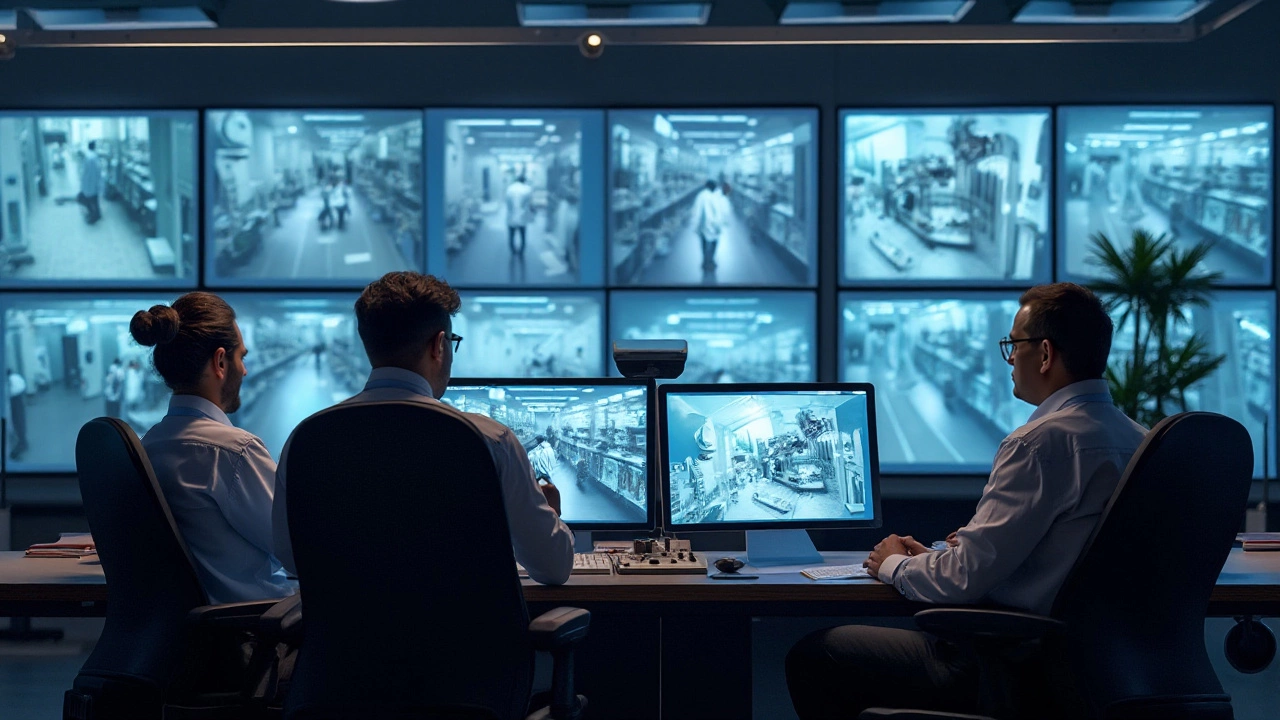
Installation and Maintenance Insights
Installing a wireless CCTV system might initially seem daunting, but it's a breeze with the right guidance. Unlike wired systems, wireless setups eliminate the need to run extensive cabling through walls, making them ideal for both renters and homeowners who might be averse to making permanent changes to their living spaces. The key is in meticulously planning the layout. Begin by identifying the strategic spots that offer the maximum field of view. A well-placed camera not only covers more area but also reduces the number of cameras needed, which is economically beneficial. Once locations are set, ensure your Wi-Fi network can reach each camera site without dropouts. This may sometimes mean investing in a stronger router or range extenders.
One significant advantage of wireless camera systems is their ease of maintenance. With no cables to weather the elements, there's less wear and tear on the visible aspects of the system. It's important, however, to frequently check the equipment itself. Ensure that each camera's lens remains clean, as dust or debris can distort or block the vision, and occasionally test receptions. Regularly update the system firmware, as manufacturers often release patches to fix vulnerabilities, improving security and efficiency. Batteries, if applicable, should be checked bi-monthly to prevent downtime of your security system.
Choosing the Right Equipment
When purchasing a wireless CCTV kit, consider opting for models with high-definition capabilities, night vision, and expansive storage options. While initial setup involves more than just 'plug-and-play', the process is rarely more complex than connecting to a smartphone app. This app usually serves as the control center for all cameras, providing real-time alerts and a live view. As you're installing, make proper use of the app to line up the camera angles and verify the signal strength. Don't rush the calibration process – a few extra minutes at this step can save hours tweaking later.
Professional Input and Best Practices
While DIY is feasible, consulting a security professional can be invaluable. “An expert eye can spot vulnerabilities that a layman might miss,” notes security analyst Marco Ortega.
"Think like a burglar when placing your cameras," Ortega advises, "Strategically positioned cameras can deter potential intruders before they even attempt forced entry."It's also wise to follow best practices such as keeping cameras unobtrusive to avoid vandalism while still in plain sight to serve as a deterrent. Invest in weatherproof models if placing them outdoors and occasionally check mounting brackets to ensure stability.
Strengthening your home with a wireless CCTV system isn’t just about technology but also about remaining vigilant and informed. With a combination of proper installation and diligent maintenance, these systems offer robust protection, seamlessly integrating into modern lifestyle.

